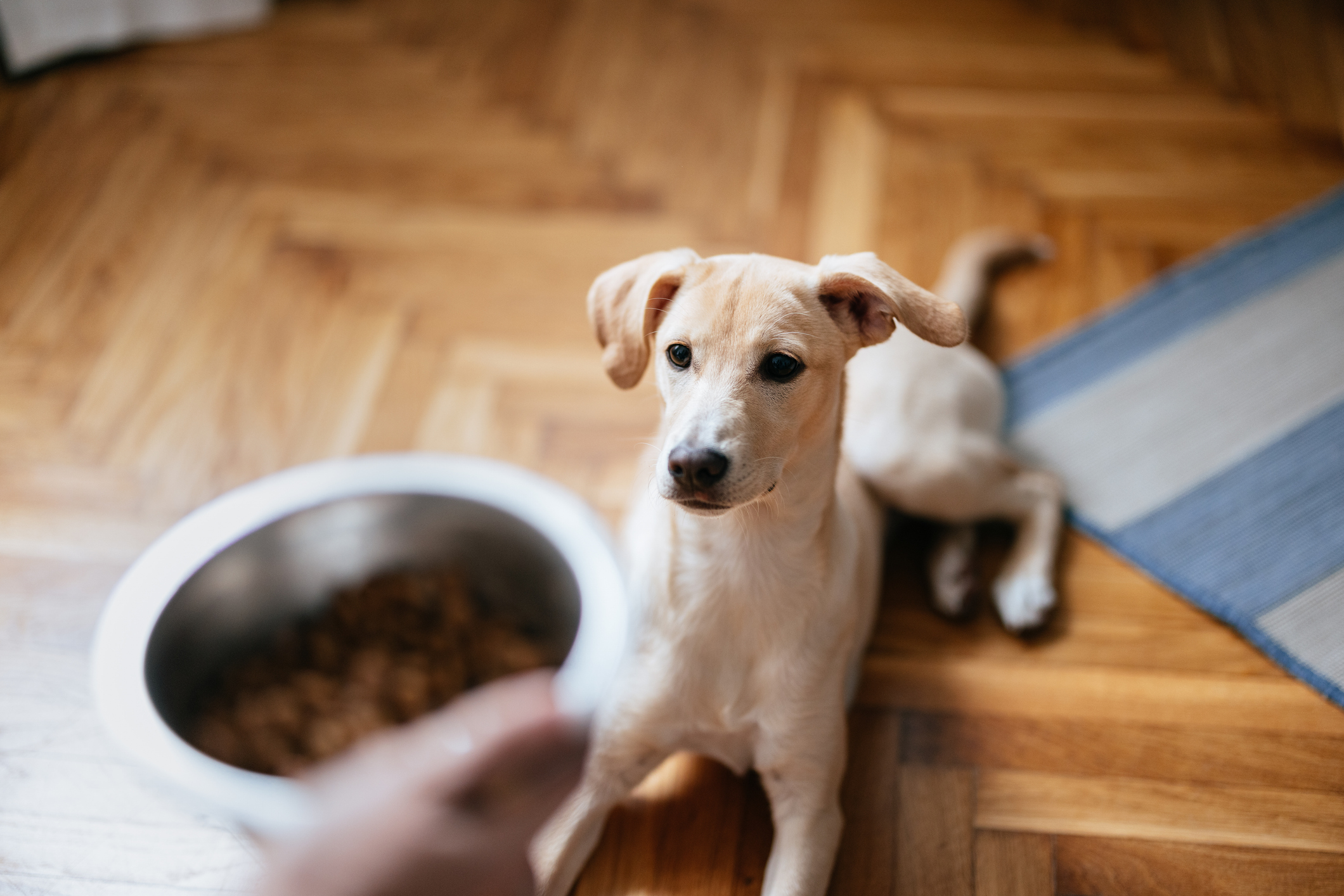Hey Ollie blog readers! We’re offering you an exclusive 60% OFF your starter box! Try now!
A raw diet for dogs is one of the most persistent dog food trends, but that doesn’t mean it’s safe or healthy for your dog. Here’s what a responsible pet owner needs to know about feeding their dog raw food.
What’s a Raw Diet Mean?
Raw dog food, which is sometimes called RMBA for raw meat-based diet, is a diet centers on uncooked meat. A popular spinoff with the nickname “BARF” (biologically appropriate raw dog food diet) includes pulverized bones, vegetables, and fruit as well. Raw dog food is typically made by pet parents at home, however, there are some companies that focus on raw food as well.
Why Do People Feed Their Dog Raw Food?
There’s a perception out there that raw food is better because it’s how pups’ ancestors (aka wolves) ate. The idea is that dogs are essentially domesticated wolves (a false premise), and they healthiest way for our furry best friends to eat is how wolves do in the wild. While raw dog food is less processed, there are potential dangers too.
Is a Raw Diet for Dogs Dangerous?
There are a number of risks associated with feeding a dog raw food and uncooked meat specifically. A recent study published in the Journal of the American Veterinary Medical Association found that healthy dogs who eat raw food diets will sometimes experience adverse effects ranging from increased gas production to life-threatening concerns such as salmonella or listeriosis. If you are considering putting your dog on a raw food diet, here’s what you need to keep in mind..
Raw Diet Risk #1: Bacterial Contamination
So here’s the really icky part: Another study in in JAVMA of 20 commercially available raw dog food diets found that more than 7 percent contained salmonella and E. coli bacteria was present in nearly 60 percent. Even worse, when a dog poops after eating raw food, the bacteria could potentially lead to human exposure and infection. Yes, any food is subject to contamination, but the risk is higher for raw food simply because it’s not cooked. Freezing won’t help, says Judy Morgan, a veterinarian and author of Canine Kitchen Capers. “Bacteria will not be killed by freezing, only by cooking,” says Dr. Morgan, who explains that even if you go the DIY route, “most grocery store meats are contaminated, because the USDA assumes the meat will be cooked before eating.”
Raw Diet Risk #2: Nutrient Deficiency in Your Dog
It’s tough to correctly balance any homemade dog food, and that includes raw: A study published in JAVMA found that most homemade raw diets are deficient in one or more essential fatty acids, vitamins, minerals or a combination of those. A raw food diet should be 80 to 85 percent meat, bones and organs with 10 percent ground bone to have the correct calcium to phosphorus ratio, something that’s essential for heart health, immune, neuromuscular, and endocrine function.
“If the bone content is too high, constipation will result,” Dr. Morgan says. And then there’s the issue of fruits and vegetables, which most raw diets omit. There’s no consensus on whether your dog needs them, but according to Amy Shojai, a former vet technician and author of New Choices in Natural Healing for Dogs and Cats, in order for a dog’s diet to be nutritionally complete, it should contain them.
Raw Diet Risk #3: Dog Digestion Issues
Dogs can experience issues with digestion, specifically when the bone content in raw food is too high. If this is the case, constipation will often result. (Read: “What to Do When Your Dog Can’t Poop”).
Raw bones can also pose another problem: there’s the potential for the whole bones to be a choking hazard, to break their teeth or to cause internal puncture. Raw vegetables and grains can also be difficult to digest, Shojai says—cooking them at a low temperature will help.
The Ollie blog is devoted to helping pet parents lead healthier lives with their pups. If you want to learn more about our fresh, human-grade food, check out MyOllie.com.
Tagged As:

The nutrition your dog needs,
the food they want.

Enjoying our articles? Subscribe our Newsletters and get new articles directly to your inbox
You might also like
12 August 2025
5 MINS READ
Top 8 Allergens Hiding in Your Dog’s Bowl
As pup parents, we never want to see our dogs uncomfortable. When it comes to itching, swelling, and upset stomachs, the culprit may be in their bowl. Understanding the most common allergens and t…
by Ollie Pets
12 August 2025
5 MINS READ
Raw vs. Gently Cooked: Which Is Ideal for Your Pup?
As more pup parents seek the best fresh dog food for their companions, they may find themselves choosing between a raw diet and a fresh diet. While cases have been made for both options, let’s exa…
by Ollie Pets
12 August 2025
5 MINS READ
Why Human-Grade Ingredients Matter for Your Dog
A healthier, happier dog starts with the right food. That said, knowing which diet is best for your pup can be overwhelming at times. Understanding what human-grade means, why it matters, and how …
by Ollie Pets







